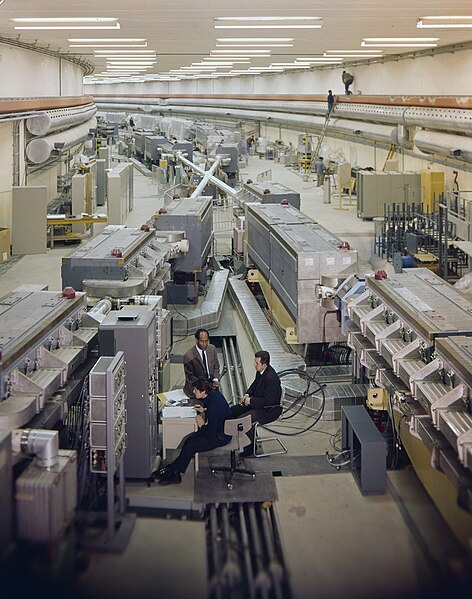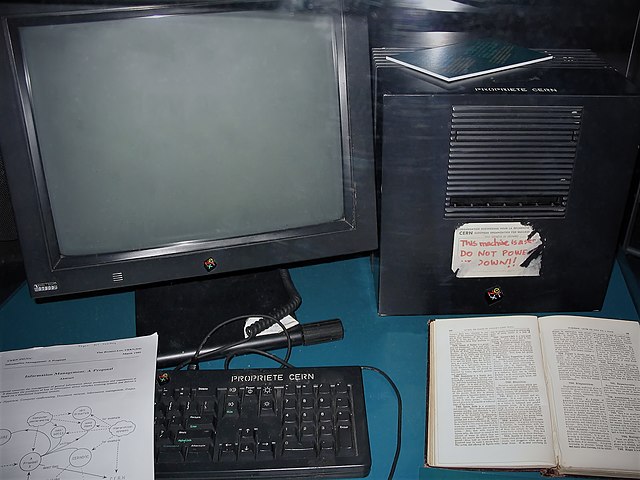Intersecting Storage Rings
The ISR was a particle accelerator at CERN. It was the world's first hadron collider, and ran from 1971 to 1984, with a maximum center of mass energy of 62 GeV. From its initial startup, the collider itself had the capability to produce particles like the J/ψ and the upsilon, as well as observable jet structure; however, the particle detector experiments were not configured to observe events with large momentum transverse to the beamline, leaving these discoveries to be made at other experiments in the mid-1970s. Nevertheless, the construction of the ISR involved many advances in accelerator physics, including the first use of stochastic cooling, and it held the record for luminosity at a hadron collider until surpassed by the Tevatron in 2004.
Some of the buildings associated with the ISR at CERN, Geneva. The accelerator itself is beneath the curved, tree-covered hill that runs around the outside of the road.
A memorial of Werner Heisenberg and of ISR inauguration
The I4 intersection point at the ISR, which hosted the Split Field Magnet Detector
Image: ISR22
The European Organization for Nuclear Research, known as CERN, is an intergovernmental organization that operates the largest particle physics laboratory in the world. Established in 1954, it is based in Meyrin, western suburb of Geneva, on the France–Switzerland border. It comprises 23 member states. Israel, admitted in 2013, is the only non-European full member. CERN is an official United Nations General Assembly observer.
CERN's main site in Meyrin, Switzerland, looking towards the French border
This NeXT Computer used by British scientist Sir Tim Berners-Lee at CERN became the first Web server.
This Cisco Systems router at CERN was one of the first IP routers deployed in Europe.
A plaque at CERN commemorating the invention of the World Wide Web by Tim Berners-Lee and Robert Cailliau








